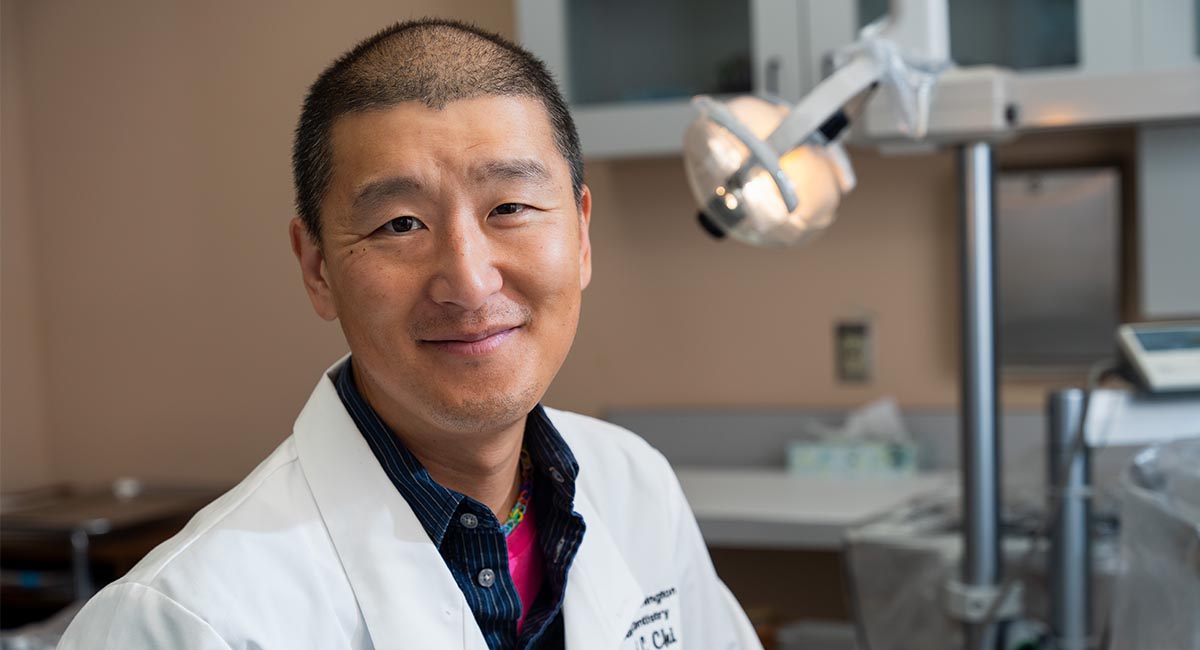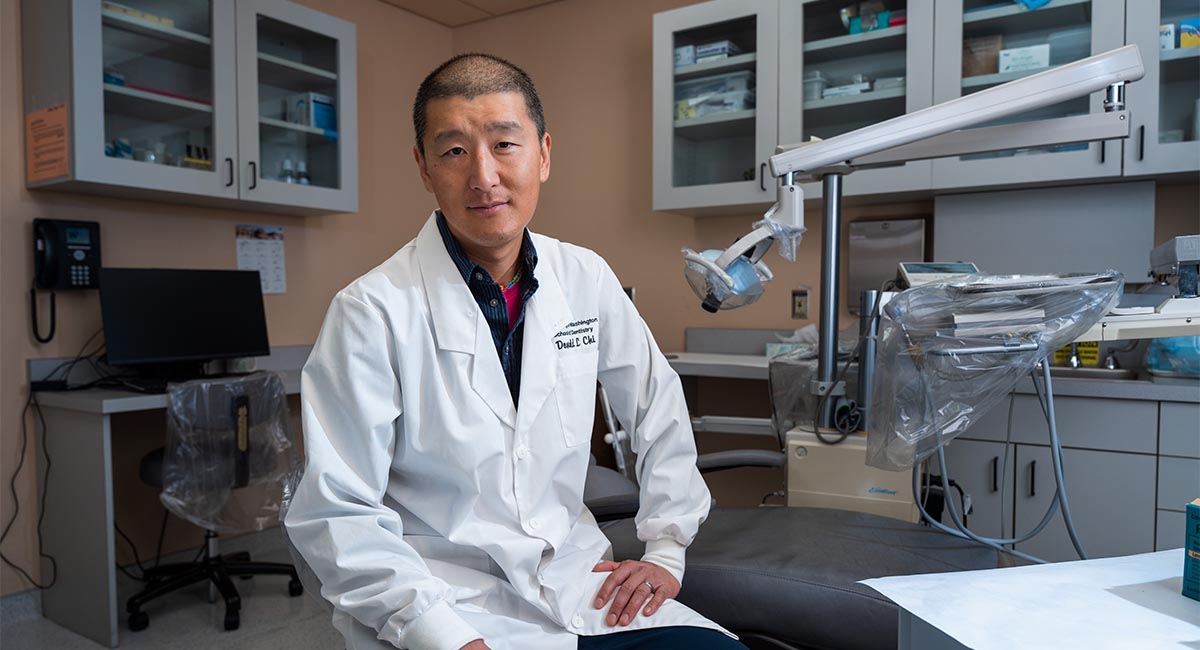
Donald Chi is a professor of Health Systems and Population Health at the UW School of Public Health. (Photo: Elizar Mercado)
Dental care has historically not been considered essential health care in the American medical system. But anyone who has experienced limited access to dental care knows the connection between teeth and public health.
“Ask an individual who has had to deal with a child having a toothache for weeks on end and is not able to find a dentist to care for their child. Does that parent know about the connections between dental care and public health and the broader health care system? Absolutely,” said Donald Chi. “Privileged people in general do not see the connection because privilege affords you the opportunity to buy your way out of a lot of the problems that individuals from underserved communities deal with every single day.”
Chi is a professor in the Schools of Public Health and Dentistry at the University of Washington (UW), where he studies children’s oral health inequalities. After 10 years of working with Yup’ik Indigenous communities in Alaska, he’s learned about the impact of oral health on public health, especially among rural and remote communities.
Chi has been making several multi-weeklong trips a year to the Yukon–Kuskokwim (YK) Delta region of southwestern Alaska, providing dental care, getting to know families, and learning about the benefits and challenges of living in rural areas. This close partnership with communities has evolved into a years-long research project to understand and change the impacts of sugary fruit drinks on Yup’ik children’s health.
“As I was providing dental care, what was happening unbeknownst to me was that there was a connection and a relationship starting to establish between myself and the communities,” Chi said. “Those provider-patient relationships were the foundation on which I was able to build the research program we are currently working on in Alaska.”
The clinical trial Chi and his UW team have been conducting is funded by the National Institutes of Health (NIH). This is the first time this type of research has been done with Alaska Native communities, Chi said. Through years of conversations with Yup’ik communities, families wanted help in reducing the amount of sugary fruit drinks their children are consuming, as it’s been impacting their health.
Sugary fruit drinks are a primary source of increased sugar in children’s and adolescents’ diets, which can lead to problems like cavities, childhood obesity, and cardiovascular disease.
“This challenge is not unique to Yup'ik or Alaska Native communities,” Chi said. “Many communities in the Lower 48 struggle with sugary fruit drinks. I see this in clinic. In fact, I struggle with sugary fruit drinks with our 5-year-old. We want to make communities as healthy as possible and position families to be able to make the best beverage-related decisions that they can. We had a unique opportunity in Alaska to come together with communities and say, ‘We agree on the challenge: How do we address all the pieces that go into fixing it?’”

The research uses Indigenous community health workers as an intervention method to educate parents in the community about the harms of sugary fruit drinks and provide tools for implementing behavior change. The intervention centers on recommending sugar-free water enhancers, which are drops added to water, as a replacement for drinks like Kool-Aid. To figure out if the intervention is actually changing behavior, researchers studied the sugar intake of children ages 1 to 11 over a 12-month period starting in September 2022. They used methods like collecting hair samples to detect sugar intake, a technique developed by researchers at the University of Alaska Fairbanks. They also collected plaque samples from children, which is a surrogate measure of tooth decay.
“When you have lots of sugar intake, you're going to have a specific bacteria profile in your mouth,” Chi said. “Lots of sugar means lots of bacteria, so you're going to have lots of harmful bacteria. If you start to cut sugar out of your diet, that bacteria profile should change over time.”
Chi used community-based participatory research principles, which means that community members are instrumental in every step of the research process and provide feedback. For example, researchers were using a gold-standard method of tracking diet, called 24-hour recalls, where researchers asked families to share everything that their child ate in one day. For families with one child, this is a difficult task, Chi said, but for families with four, five, or six children enrolled in the study, this was nearly impossible.
Luckily, Chi was able to take this feedback to the NIH and data safety advisory board and change the method. This kind of adaptability is not always possible in research processes but is important for working in partnership with communities. This collaborative work is especially critical in building trust with Indigenous communities, which have had a history of being exploited and taken advantage of by scientific researchers, Chi said.
“Rigorous, reproducible methods are super important. With community-based research, if your intervention has no saliency to the local population or if it’s not feasible or sustainable, then your methods don't matter,” Chi said.
Chi and his team finished their final data collection in September 2023, and they are just starting to share preliminary findings with Yup’ik communities. While they don’t yet know the impact of the intervention, they are hopeful that their close partnerships with the Yup’ik community in the YK Delta can continue to lead to further collaborative research on these topics, perhaps expanding the scale of the intervention to other communities in Alaska.
“We’re already starting that community-based participatory research cycle again,” Chi said. “We’ve learned a lot over the last 10 years; where do we go next? The community has a say in the process so that together, we can figure out the next steps in our partnership.”
Methods to Research to Practice Continuum
This story is part of a series sharing how our faculty navigate the methods to research to practice continuum, or the journey from developing a research idea, to using a scientific strategy and conducting research, to working alongside communities so that findings have meaningful impact.